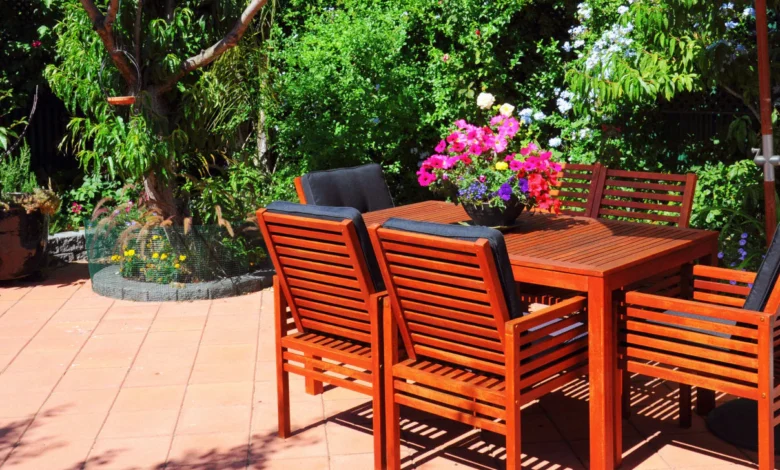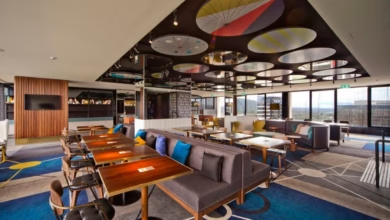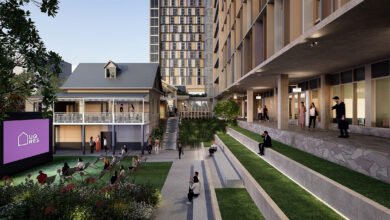Patio Timber Furniture: An Aussie Guide

Australians have a unique and enduring love affair with outdoor living. Our climate, from sun-drenched summers to mild winters, invites us to spend more time in our backyards, on our balconies, and on our patios.
At the heart of this outdoor culture is timber furniture, a natural choice that blends durability, beauty, and a timeless connection to the landscape. Understanding the trends, benefits, and care for patio & outdoor timber furniture, supported by data on how we live, is key to creating your perfect alfresco space.
The State of the Australian Backyard
Recent data from the Australian Bureau of Statistics (ABS) and other government bodies paints a clear picture of our outdoor habits:
- Housing and Outdoor Space: The 2021 Census by the ABS revealed that nearly 80% of Australians live in a separate house, typically with some form of private outdoor space like a backyard, courtyard, or patio. This creates a massive potential market for outdoor furnishings.
- The Rise of Renovation: During the pandemic, the HomeBuilder grant and other state-based initiatives led to a significant surge in home renovation and new dwelling construction. Data from the Australian Bureau of Statistics on Building Approvals showed a substantial spike, and a related outcome was a heightened focus on improving outdoor living areas as functional extensions of the home.
- Value of Outdoor Living: Research compiled by organisations like YourHome, Australia’s guide to environmentally sustainable homes, emphasises the design principle of integrating indoor and outdoor spaces. This not only improves lifestyle but can also increase the perceived value and livability of a property, making a well-furnished patio a smart investment.
Numbered List: The Complete Guide to Patio & Outdoor Timber Furniture
1. Understanding Your Timber Options
The first step is choosing the right type of timber. Each species offers a unique blend of aesthetics, durability, and price.
- Hardwood (The Durable Classics):
- Spotted Gum: A premier Australian native hardwood. It’s incredibly dense, resistant to termites and decay, and features beautiful natural variations in colour from pale brown to deep red. It’s a top-tier, long-lasting choice.
- Teak: The gold standard for luxury outdoor furniture. Naturally high in oily resins, teak is exceptionally resistant to moisture, rot, and insects. It weathers to a distinctive silvery-grey patina if left untreated.
- Jarrah: Another dense Australian hardwood, known for its rich, deep red colour and excellent weathering properties. It is very strong and durable, making it ideal for heavy-use furniture.
- Softwood (The Cost-Effective Choice):
- Treated Pine: This is pine wood that has been impregnated with chemical preservatives to protect it from rot, decay, and insect attack. It is the most budget-friendly option and is typically what you find in “flat-pack” style outdoor settings. It requires painting or staining for long-term durability and to prevent weathering.
- Sustainable Alternatives:
- Plantation-Grown Teak: Look for certifications from the Forest Stewardship Council (FSC) to ensure your teak comes from sustainably managed plantations, addressing environmental concerns about old-growth teak logging.
- Accoya: Not a natural species, but a revolutionary wood product. It is typically Radiata Pine that undergoes a non-toxic acetylation process, making it extremely stable, durable (often with a 50-year above-ground warranty), and resistant to rot.
2. The Unbeatable Benefits of Timber
Why does timber remain so popular against modern composites and metals?
- Natural Aesthetics: Timber has a warmth and organic beauty that synthetic materials struggle to replicate. It complements the Australian garden and landscape perfectly.
- Durability and Strength: High-quality hardwoods are exceptionally strong and can withstand the harsh Australian sun, heavy rain, and constant use for decades.
- Comfort: Timber is a natural insulator. It doesn’t get scorching hot in the sun like metal or freezing cold in the winter, making it more comfortable to use across seasons.
- Versatility in Design: Timber can be crafted into any style, from rustic and rugged to sleek and modern. It can be left natural, oiled, painted, or stained to match any patio décor.
- Sustainability: When sourced from responsibly managed forests, timber is a renewable and biodegradable resource, making it an environmentally conscious choice.
3. Designing Your Outdoor Space
Think of your patio as an outdoor room. Planning is essential for both function and flow.
- Define the Purpose: Is it primarily for dining? If so, a large table and comfortable chairs are key. Is it a lounge area for relaxation? Then deep-seated lounges, daybeds, and side tables are a priority. Many Australians are creating hybrid spaces to accommodate both.
- Consider Scale and Proportion: Measure your space carefully. Furniture should fit comfortably without overcrowding, allowing for easy movement. A common mistake is buying an oversized setting that dominates a small patio.
- Create Zones: For larger areas, define different zones – a dining zone, a conversation zone around a fire pit, and a solitary reading nook. Timber furniture can be used to subtly demarcate these areas.
- Accessorise: Integrate timber accessories like benches, planter boxes, and decking to create a cohesive look. Add colour and texture with outdoor cushions, rugs, and shade solutions like a timber-framed pergola.
4. Essential Care and Maintenance
To ensure your timber furniture lasts for years, a simple maintenance routine is crucial. The harsh Australian climate is the biggest test.
- Regular Cleaning: Simply wipe down your furniture every few months with a soft brush and mild, soapy water. This removes dirt, pollen, and grime that can degrade the wood’s surface. Rinse thoroughly with a hose.
- The Annual Oil Treatment: For most hardwoods (like Spotted Gum and Jarrah) and teak, an annual application of a specialised outdoor timber oil is recommended. This replenishes the wood’s natural oils, enhances its colour, and provides a protective barrier against UV rays and moisture. Always follow the manufacturer’s instructions.
- Managing the Elements: While durable, prolonged exposure can take its toll. During extreme weather events like cyclones or prolonged heavy rain, it’s wise to move furniture undercover or use protective covers. For teak left to go grey, this is a natural process and requires no oiling, just occasional cleaning.
- Addressing Minor Issues: Sand out minor scratches or stains with fine-grit sandpaper before re-oiling. If mould appears, clean it immediately with a vinegar solution or a dedicated timber cleaner.
5. Making a Smart Purchase
Investing in quality timber furniture pays off in the long run.
- Quality Check: Look for sturdy construction – mortise and tenon or dowel joints are superior to just screws and glue. The timber should feel solid and heavy for its type.
- Ask About the Source: Don’t be afraid to ask retailers where the timber comes from and if it is certified sustainable. Supporting responsible forestry is important.
- Understand the Finish: Find out if the furniture has been pre-oiled or sealed at the factory. This will dictate when your first maintenance session should be.
- Consider the Long-Term: While the initial cost of a premium hardwood setting is higher than treated pine, its lifespan is significantly longer, making it a better value over time.
By understanding the data, the materials, and the maintenance, you can make an informed decision and invest in patio timber furniture that will become the centrepiece of your Australian outdoor lifestyle for years to come.



